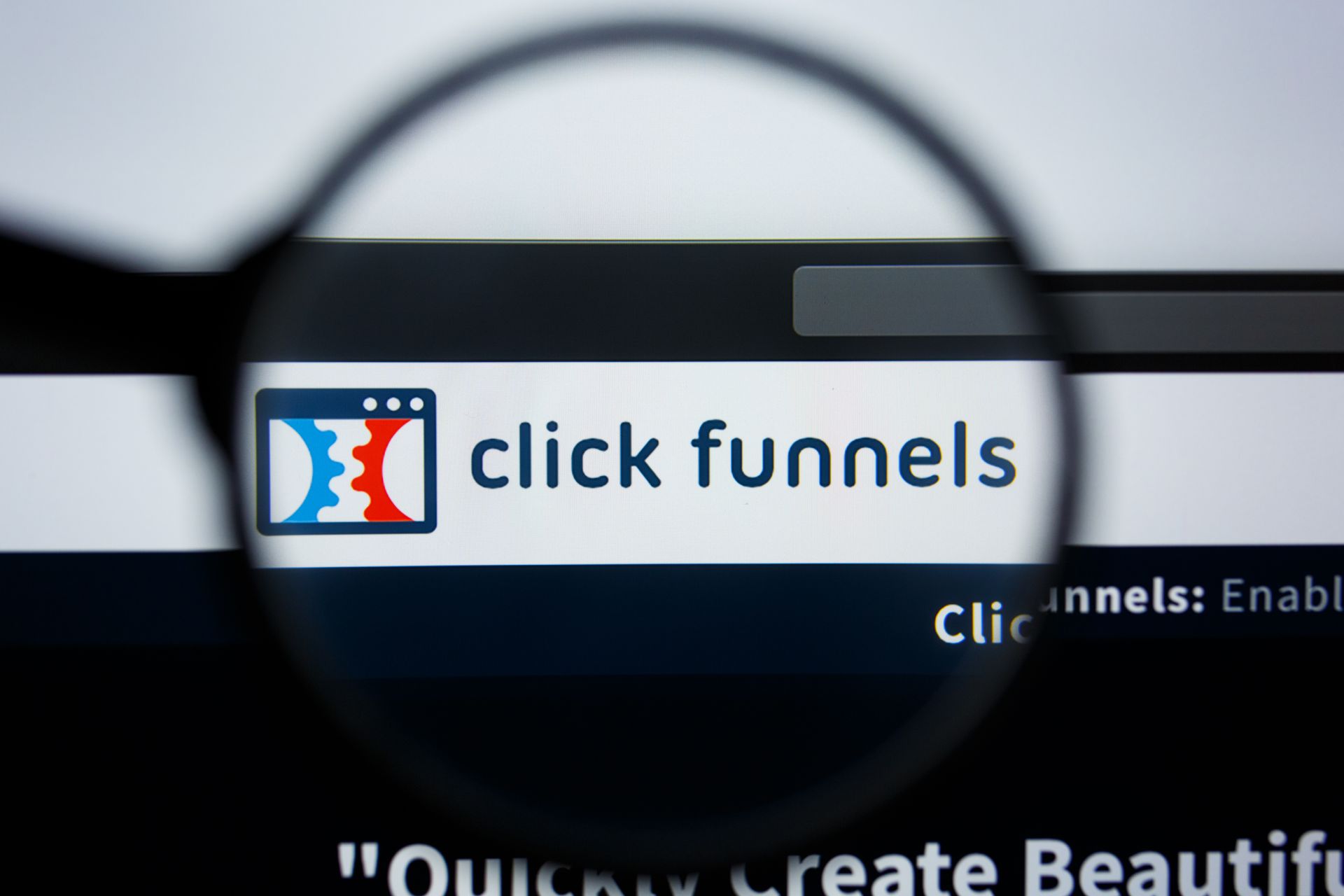Maximizing Your Clickfunnels SEO Strategy: A Comprehensive Guide

In the current digital landscape, having a robust SEO strategy is essential for any online business to succeed. Clickfunnels is a popular platform that allows businesses to create high-converting sales funnels. However, to make the most of this tool, it's crucial to optimize your Clickfunnels website for search engines.
In this comprehensive guide, we will explore how you can maximize your Clickfunnels SEO strategy to improve your online visibility, attract more organic traffic, and ultimately increase conversions. We'll cover everything from conducting keyword research to optimizing your on-page and off-page SEO. We will also discuss measuring and analyzing your results.
Are you new to Clickfunnels or looking to enhance your current website? This guide will equip you with the knowledge and resources needed to take your SEO game up a notch. Let's explore the fantastic world of Clickfunnels SEO together!
Understanding Clickfunnels SEO
To effectively optimize your Clickfunnels website for search engines, it’s important to have a solid understanding of how Clickfunnels SEO works. Clickfunnels is a website builder that allows businesses to create sales funnels, landing pages, and other types of marketing pages.
While Clickfunnels provides a range of SEO-friendly features, it’s important to note that the platform doesn’t automatically optimize your website for search engines. To improve your Clickfunnels SEO, consider the following:
The Importance of SEO in Sales Funnels
Search Engine Optimization (SEO) is commonly known for its ability to drive organic traffic to your website. However, its impact goes beyond that. SEO plays a pivotal role in attracting potential customers at different stages of their buying journey in sales funnels. By optimizing your sales funnel and combining it with effective SEO practices, you can enhance your brand's visibility and credibility, leading to increased conversions.
Effective SEO Strategies for ClickFunnels
Search engines favor high-quality, relevant content that provides value to the user. Make sure your Clickfunnels pages are optimized with relevant keywords and provide valuable information to your visitors.
On-page Optimization
On-page optimization refers to the process of optimizing individual pages on your website. This includes optimizing your title tags, meta descriptions, headers, and other HTML elements.
Off-page Optimization
Off-page optimization refers to techniques used outside of your website to improve its search engine rankings. This includes building high-quality backlinks to your Clickfunnels pages and promoting your website on social media and other channels.
Technical Optimization
Technical optimization involves optimizing your website’s structure and code to ensure it’s easily crawlable by search engines. This includes optimizing your website’s speed, mobile responsiveness, and ensuring that your website is secure with HTTPS encryption.
Conducting Keyword Research for Clickfunnels
Keyword research is the process of identifying the keywords and phrases that people use to search for information related to your business. By conducting keyword research, you can identify the terms and phrases that are most relevant to your business and optimize your Clickfunnels pages accordingly.
To conduct keyword research for Clickfunnels, follow these steps:
Identify Your Target Audience: Before you can conduct keyword research, it’s important to understand your target audience. Who are your ideal customers, and what type of information are they searching for online?
Brainstorm Keywords:
Start by brainstorming a list of relevant keywords and phrases that you think people might use to search for your business. You can use tools like Google’s Keyword Planner, SEMrush, or Ahrefs to help you generate keyword ideas.
Analyze Keyword Difficulty: Once you have a list of potential keywords, it’s important to analyze their difficulty. Keyword difficulty refers to how difficult it is to rank for a particular keyword. Aim for keywords with low to medium difficulty to improve your chances of ranking on the first page of search engine results pages.
Refine Your List: After analyzing keyword difficulty, refine your list to include only the most relevant and achievable keywords for your Clickfunnels pages.
Technical SEO for Clickfunnels
Technical SEO involves optimizing your Clickfunnels website’s structure and code to ensure it’s easily crawlable by search engines. By optimizing your website’s technical elements, you can improve your website’s visibility and attract more organic traffic.
Let’s explore some key techniques for optimizing your Clickfunnels website’s technical SEO:
Ensure Your Website Is Mobile-Friendly:
With more and more people using mobile devices to browse the internet, it’s essential that your Clickfunnels website is optimized for mobile users. Ensure your website is mobile-responsive and loads quickly on mobile devices.
Optimize Your Website’s Speed:
Website speed is a critical factor in optimizing your search engine rankings. Make sure you use tools such as Google PageSpeed Insights or GTmetrix to assess your website’s loading time and identify potential areas of improvement.
Use HTTPS Encryption:
HTTPS encryption is a security protocol that encrypts data transmitted between your Clickfunnels website and its visitors. By using HTTPS encryption, you can improve your website’s security and trustworthiness in the eyes of search engines.
Optimize Your Website’s Structure:
Your Clickfunnels website’s structure should be logical and easy to navigate. Use categories and subcategories to organize your content and make it easy for users and search engines to find what they’re looking for.
Implement Structured Data:
Structured data is a type of code that provides additional information to search engines about your Clickfunnels website’s content. By implementing structured data, you can improve your website’s visibility and attract more organic traffic.
Measuring and Analyzing Clickfunnels SEO
Measuring and analyzing your Clickfunnels SEO is essential to determine the effectiveness of your SEO strategy and identify areas for improvement. Here are some key metrics and tools to help you measure and analyze your Clickfunnels SEO:
Organic Traffic:
Organic traffic refers to the number of visitors to your Clickfunnels website that comes from organic search engine results. Use Google Analytics or other analytics tools to track your organic traffic and identify trends over time.
Keyword Rankings: Keyword rankings refer to how well your Clickfunnels website ranks in search engine results pages for specific keywords. Use tools like Ahrefs or SEMrush to track your keyword rankings and identify areas for improvement.
Backlink Profile:
Your Clickfunnels website’s backlink profile refers to the quantity and quality of links pointing to your website from other websites. Use tools like Ahrefs or Majestic to analyze your backlink profile and identify opportunities for building high-quality backlinks.
Click-through Rate (CTR):
CTR refers to the percentage of people who click on your Clickfunnels website’s search engine results page listing compared to the total number of impressions. A higher CTR indicates that your listing is more relevant and compelling to users. Use Google Search Console or other analytics tools to track your CTR.
Bounce Rate: Are you curious to learn the amount of people who leave your Clickfunnels website after merely viewing a single page? That’s Bounce Rate. This number can suggest that tweaks need to be made in regards to content or user experience; luckily, Google Analytics and other analytic tools are available for tracking effective bounce rate monitoring.
Contact Oamii—Your Digital Marketing Experts
Are you struggling to maximize your Clickfunnels SEO strategy? Contact Oamii, your digital marketing expert! Our team of experienced professionals can help you improve your Clickfunnels SEO, attract more organic traffic, and ultimately drive more conversions for your business. Contact us today to schedule a consultation and take your Clickfunnels website to the next level.
Disclaimer: The information on this website and blog is for general informational purposes only and is not professional advice. We make no guarantees of accuracy or completeness. We disclaim all liability for errors, omissions, or reliance on this content. Always consult a qualified professional for specific guidance.








